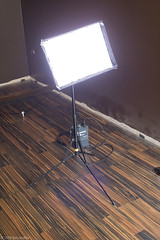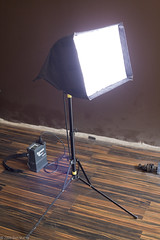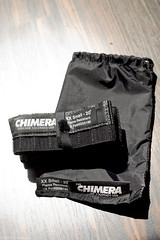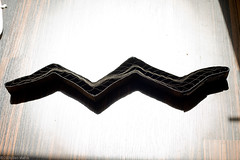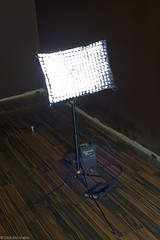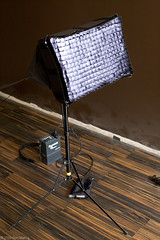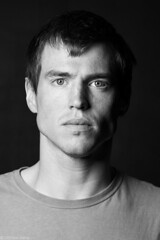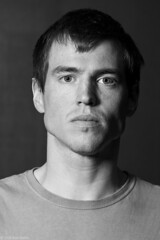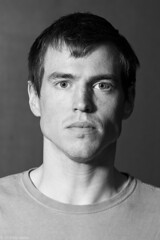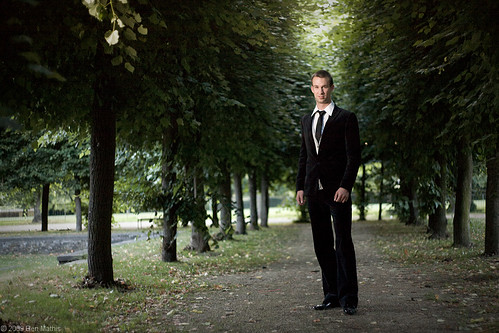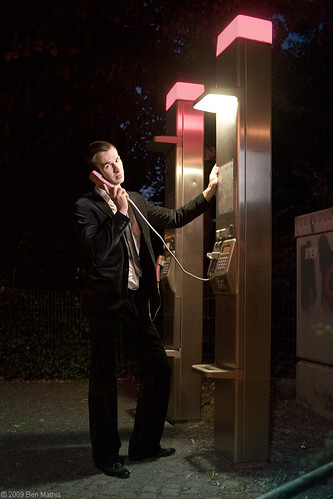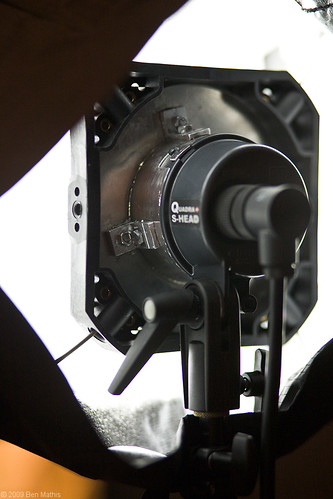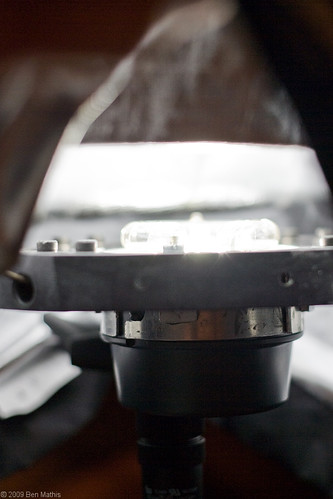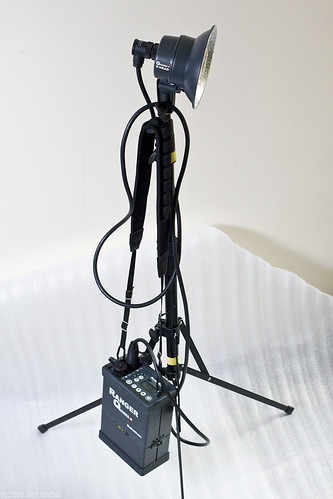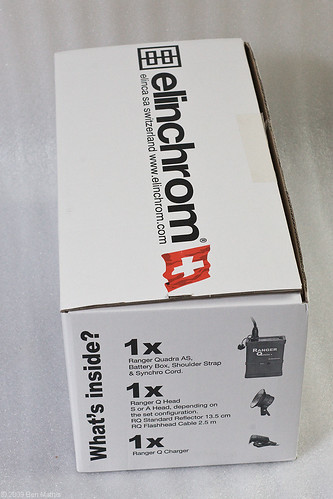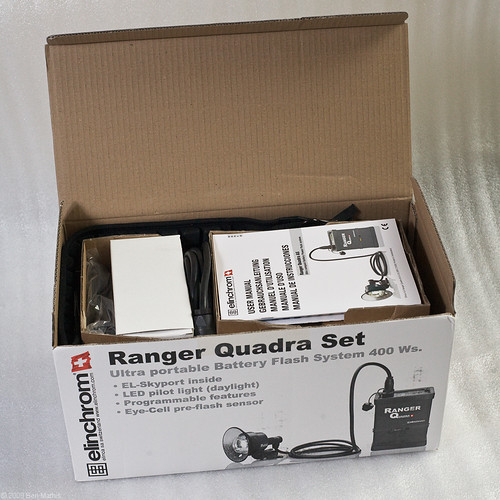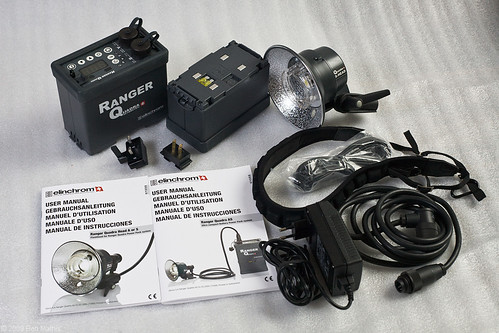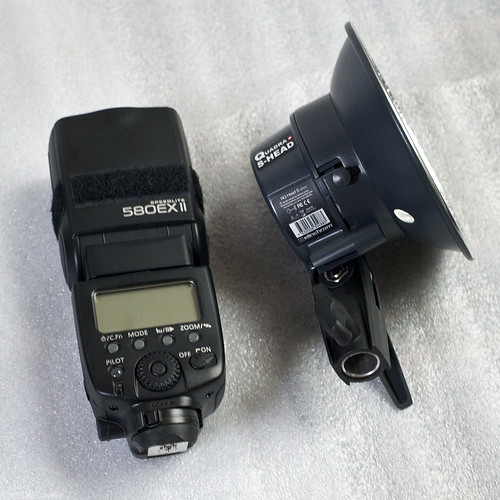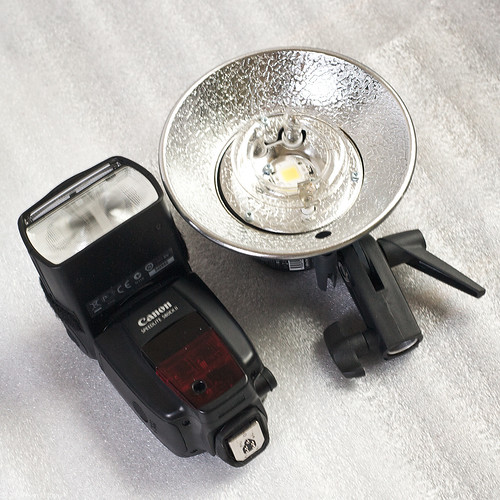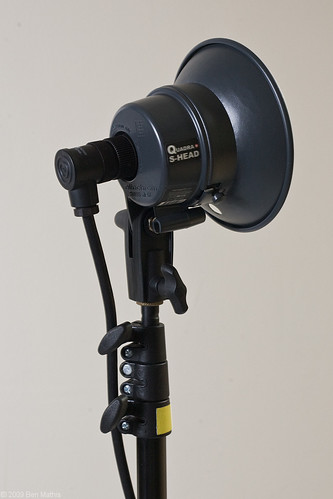Want full control over the light and shadows in your photography? Understanding how light works is necessary, and this paper will attempt to explain how to affect the lighting, shadow quality, and apparent shininess of your subject.
This tutorial is geared toward both 3D artists and photographers. There will be times when I need to make a technical explanation that won't make sense to one group. I'll try to use terms that both groups will understand. All units will be in metric.In this explanation, we're going to focus on the two most important objects in a photo, or a 3d rendering. The light source, and the subject. All explanations will be assuming one light, as it applies to multiple lights identically.
The light source has 4 properties that affect the lighting of the scene.
- Apparent size
- Distance from subject
- Intensity (brightness)
- Color temperature
The subject has 2 properties
- Surface reflectivity
- Surface roughness
We can affect the way the light interacts with the subject, by knowing how these 6 properties interact.
- Shadow edge softness
- Width of the penumbra (area where light transitions to dark, sometimes called the terminator)
- Brightness of specular highlights
- Falloff from full light intensity to complete darkness
Light Source
All of the light sources properties are inter related, except the color temperature, which is independent of the other 3.
- Apparent size
As an example. Here is a softbox very close to my good friend, Klaus Nomi:
And the view from his perspective:
now I move the softbox further away:
Now look from his perspective:
Notice how in the last image, the softbox appears much smaller? That is because it has been moved further away. It's apparent size (to the subject) is smaller. The way to keep it's apparent size the same when moving it away, is to increase the size of the light source. In photography, you use a diffusion panel, an umbrella, or a softbox, and just select a larger size than you were using when it was in close.
Larger softbox:
From his perspective:
By increasing the size of the light source, I've kept it's apparent size the same, despite increasing the distance from light source to subject.
- Distance from Subject
There is a property of light that does not adhere to inverse square, and I will get to that under surface reflectivity. The brief version is that no matter the light's distance from the subject, the brightness of the reflection of the light source stays the same, only the size of the reflection changes.
- Intensity
- Color Temperature
Subject
Both the subject's reflectivity and roughness are highly inter related.
- Surface Reflectivity
- Surface Roughness
Here is an illustration. On the left is a bowling ball. You get one specular highlight from the fact it's just a giant smooth ball. On the right, you have a bowling ball covered in marbles. Each marble has it's own specular highlight, because they make the surface rougher. This is exactly the difference between a smooth and a rough surface. You could also think of the difference between a smooth mirror-ball, and a disco-ball. Human skin has millions of tiny drops of oil, acting like these glass marbles. Black asphalt has tiny grains of sand and rock that are at different angles. A rough surface is essentially a faceted surface, so there is more than one non-contingent area that faces in each direction.
Some objects can have their roughness aligned in a certain direction. Think brushed aluminum, freshly-combed human hair, a Christmas ornament wrapped in thread, or a vinyl record. This roughness is referred to as anisotropy. It will affect the highlight in a way that runs along the rows of roughness. It's best to think of it like the human hairs. Thousands of tiny cylinders all roughly parallel to one another. Each hair has a normal specular like a cylinder, but when seen as a whole, you get a long, narrow highlight. If the exact same surface were perfectly smooth like a bowling ball, you'd get a specular hotspot the shape of the light source. It's the parallel roughness that causes anisotropy.
Example image: (notice how the smooth version is one continuous circle that fades out, the rough version is the same shape, but it's broken up into tiny chunks, the anisotropic turns it into a wide band that wraps around the sphere)
The way the light interacts with the subject
The entire way the surface is revealed can be controlled by the photographer or render
artist by carefully selecting the appropriate settings. All 4 properties of light, as well as the 2 surface properties, can be controlled to alter the way the light and subject interact. It's important to know how they interact, for when you desire a specific look for your photos or renders.
First, a quick rundown of the terms for the different parts of light, specularity, and shadow on an object:
The specular hotspot are the bright sharp images of the light source being reflected off the object. They are referred to as hotspots, because in most images, they are overexposed and show up as pure 255 white. The diffused light, is the area of the object being lit by the radial rays from the light source. The penumbra is the edge from where lit area changes to shadow area. This is where the roughness of an object will be most apparent. The shadow is the area not receiving any light from the light source. Unless illuminated by another light or bounce object, it will be completely black.
Shadow edge softness
The edges of the shadows can be razor sharp (like from the sun on a clear, non cloudy day) or super soft and smooth, like on a bright, but overcast day. The main property that controls this, is the apparent size of the light source. Larger apparent sizes create softer shadow edges, smaller apparent sizes create harder edges. The sun, a 3D point or spot light, a hotshoe flash, or a studio light used bare, will all produce completely sharp shadows. This is rarely desired, but when you do want a hard shadow edge, use a small light source. This section also applies to the penumbra, which is explained further into this tutorial.
Here is an illustration for hard edged shadows:
A small light source is binary. The surface of the subject can either see it, or it can't. If it can see it, it's lit. If it can't, it's in shadow. The small source means that the surface will move from lit to shadowed almost instantly, which is why the shadow edge is hard.
Here is an illustration of soft edged shadows:
This results in soft-edged shadows:
The smaller the apparent size of the light source, the harder the shadow edge, and the more it behaves like the point light example. The larger the apparent size of the light source, the softer the shadow edge will be.
Width of the penumbra (area where light transitions to dark, sometimes called the terminator)
The penumbra is controlled almost entirely by the apparent size of the light source. It's slightly affected by the roughness of the surface, and how gradually it turns away from the light. Smaller apparent light sources will create very narrow penumbras, and any surface roughness will be accentuated by all the micro shadows. Any small bumps or dents will have shadows cast. A polished sphere will have a very smooth penumbra since it is not rough, and it turns away slowly. A box has a very narrow penumbra because the surface angle changes suddenly a full 90 degrees, rather than smoothly turning away. Most faces behave like a sphere, and the penumbra should roll smoothly off, but skin with wrinkles or acne scars will show very strongly in the penumbra if your apparent light source is small.
The most flattering light for a rough surface, if you're trying to hide the roughness, is a large apparent light source. This will soften the micro shadows in the penumbra.
Brightness of specular highlights
One thing that has to be explained about specular highlights to truly understand them. Light radiating from an infinitely small point would have no specular hotspot. But all light is originated from something with a physical size; the sun, a flash tube, a light bulb, etc. Each point of this physical light source is casting light out radially. What this means is that there will be parallel rays traveling outwards in the shape of the light source.
The radial rays will fall off, because the further away you get, the more spread the light beams are, and an individual point will be receiving less of these rays. This is why the light "falls off" in an inverse square manner. However the parallel rays do not fall off. Think of them as tiny lasers, aimed perfectly from the light source itself, onto the object, which then reflects it directly into your eye. Because the light rays are not traveling outwards radially, they maintain brightness regardless of distance. The only decay of the beam will come from the particles in the atmosphere itself, but for any realistic working distance, it will not be measurable.
This illustration shows a very simplified model of this behavior:
Because the light is traveling radially, closer objects get more of the rays, further ones get fewer. This is also why shadows are sharper at the base of an object (like near the feet of a person standing on the ground). Keep in mind that the bulb is there for stylization purposes. You don't actually see a perfect reflection of the light source unless the object is incredibly smooth and reflective. On most objects it just appears as a white shape that is the same shape and dimensions as the light source. (a softbox leaving a squarish shape, and an umbrella a circular shape)
As mentioned above, light "falls off" in intensity. You can use this for control. If you put a light source extremely close to a face, by the time it reaches the person's shoes, it will be too dark to register on the sensor. As the distance from light source to subject increases, the less you can use this affect. Best to imagine the sun. Your feet are further from the sun than your head, but it's such a tiny fraction of the overall distance from the sun, that you will get no falloff. If you are 2 meters tall, and the light is 1 meter above your head, and properly bright to light your head correctly, it will be one quarter that brightness by the time it reaches your shoes. This can be used to create focal points where the eye is naturally drawn to.
summary
- Unfocused light falls off inverse squarely. Double the distance, 1/4 the brightness. Half the distance, 4x the brightness.
- Surface roughness determines how clearly the light source is reflected. Smooth surfaces give you the exact shape, rough surfaces give you a scattered shape.
- Apparent size is what's important, not absolute size. A medium source 1 meter away is apparently larger than a giant source 50 meters away.
- Apparent size of the light affects the softness of the shadow edge and penumbra. Larger apparent sizes make softer shadows and smoother penumbras, smaller sizes make sharper shadows and harsher penumbras.
- Specular reflections do not fall off. They stay the same intensity regardless of distance. Lessening the reflectance of the surface, or making the apparent size of the light larger, is necessary to lessen the specular hotspot's intensity.

